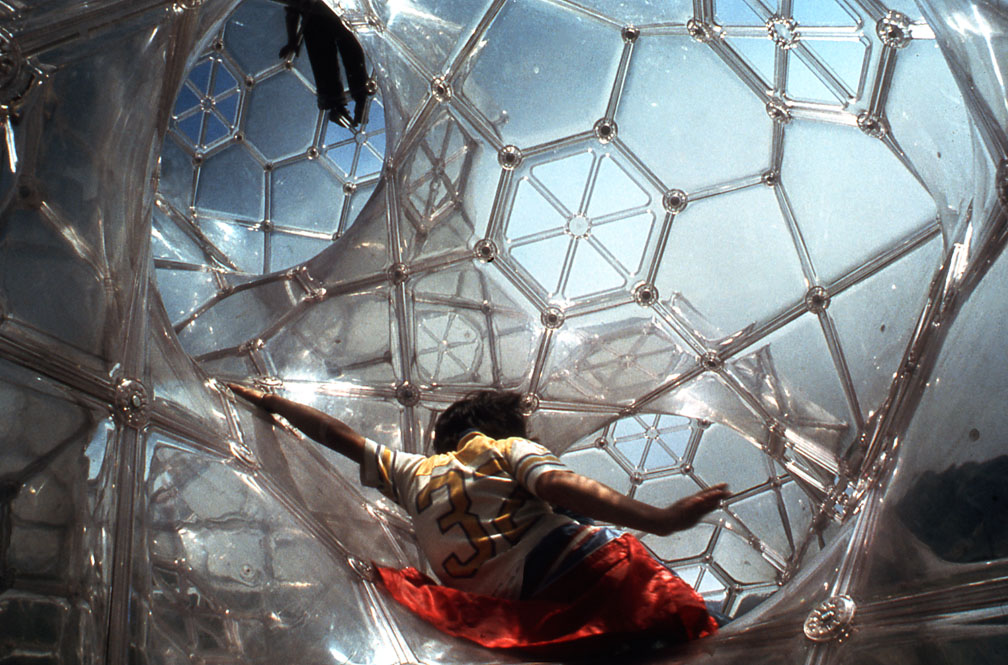
In the course of our investigations into tetrahedral cell packing we came across Peter Pearce‘s book “Structure in Nature is a Strategy for Design” (first published in 1978), in which he meticuously documented his investigations of polygons, which, according to him, form the basic reconfigurable building block for environmental structures that are both, space and energy efficient. It has the potential to become our new bible, at least for a while, as long as we are looking into space filling and cell packing.

Beyond architectural applications like the Biosphere 2 structure in Oracle, Arizona, USA, and currently the Hólos House, he developed and patented various modular construction systems such as the”the Min-a-Max Building System” (Minimum Inventory/Maximum Diversity Building System) and the “Curved Space Diamond System”.
The latter started as playground climbing sculptures, but have also been exhibited as “architectural design pieces, referred to as “usable artworks””.1

In parallel he transformed both systems into educational toys he calls “Geometry Kits”. So it seems we are on a promising track with our endevours to aim at something similiar with our Bike Builder construction toy!
The “CurvedSpace” structure builder was a direct result of these diamond structures. It is a reduced version of the large scale elements. Special connector clips allow connecting the individual shells in a variety of spatial configurations. As his website suggests, it “opens up other avenues in the exploration of non-orthogonal spatial geometry.”

The “SuperStructures” Kit was a direct result of his morphological studies documented in his book and reminds of his multihinge connection system. It is comprised of a “universial node” and 6 different struts and additional panels that snap into place.

1 Alex Kitnick (February 28, 2014). Sylvia Lavin (ed.). Everything Loose Will Land: 1970s Art and Architecture in Los Angeles (Hardcover ed.). Distributed Art Publishers, Inc. pp. 11–13, 314. ISBN9783869844527.